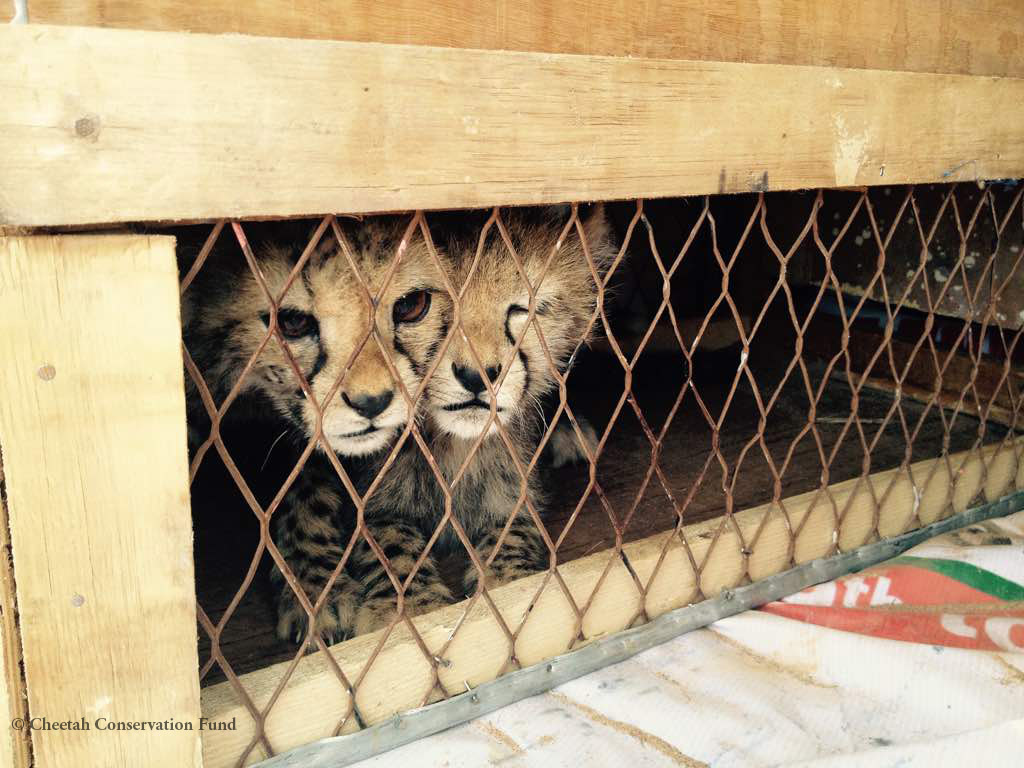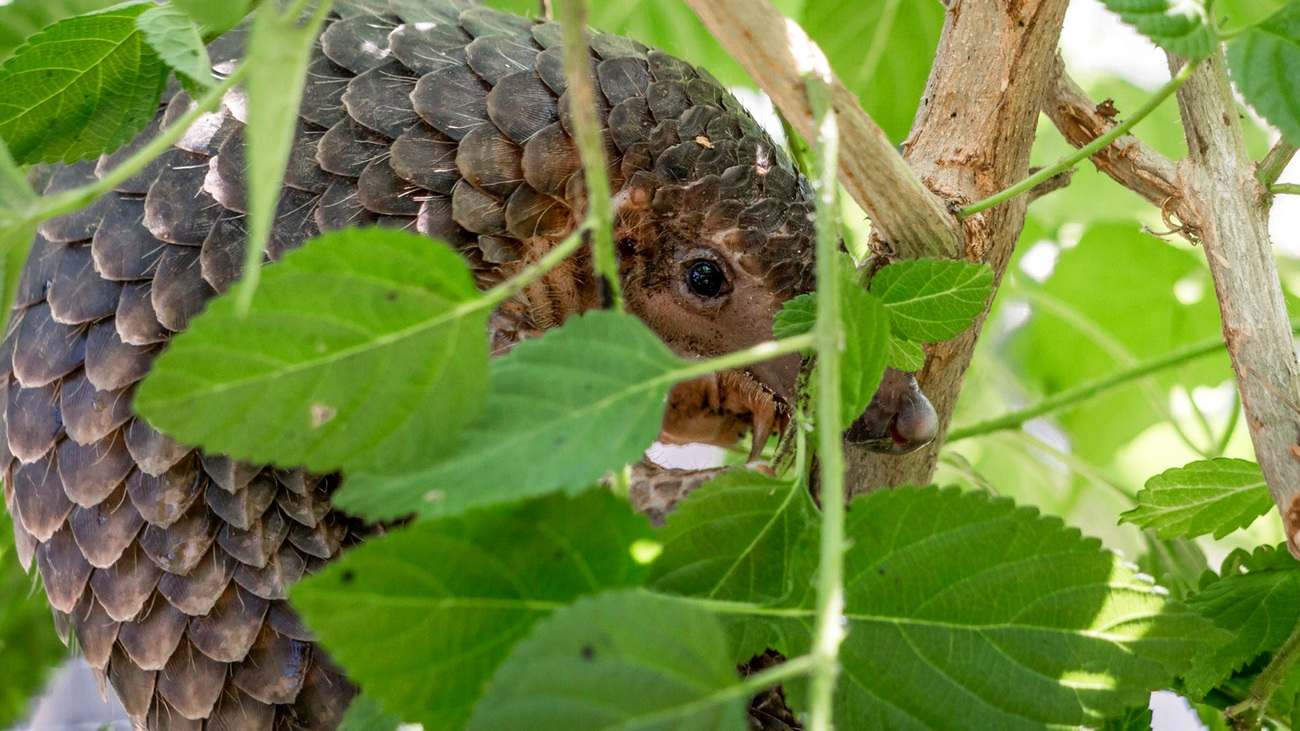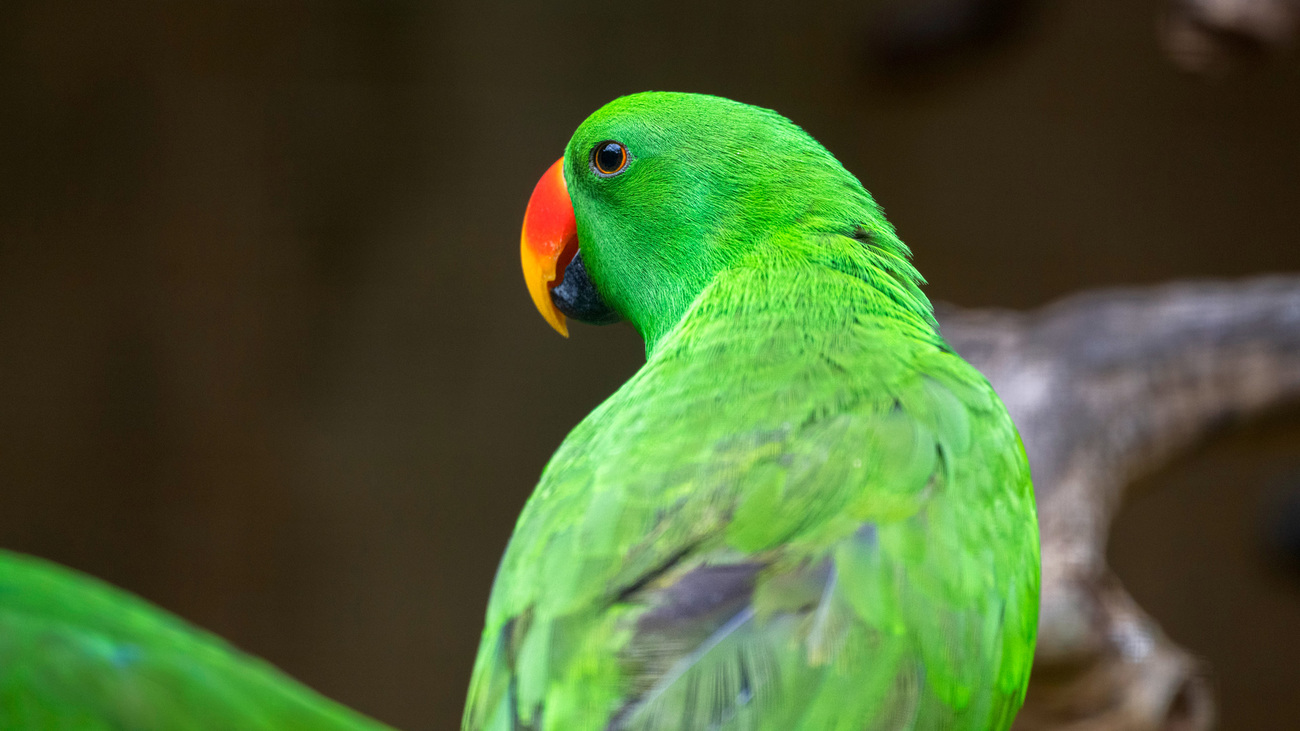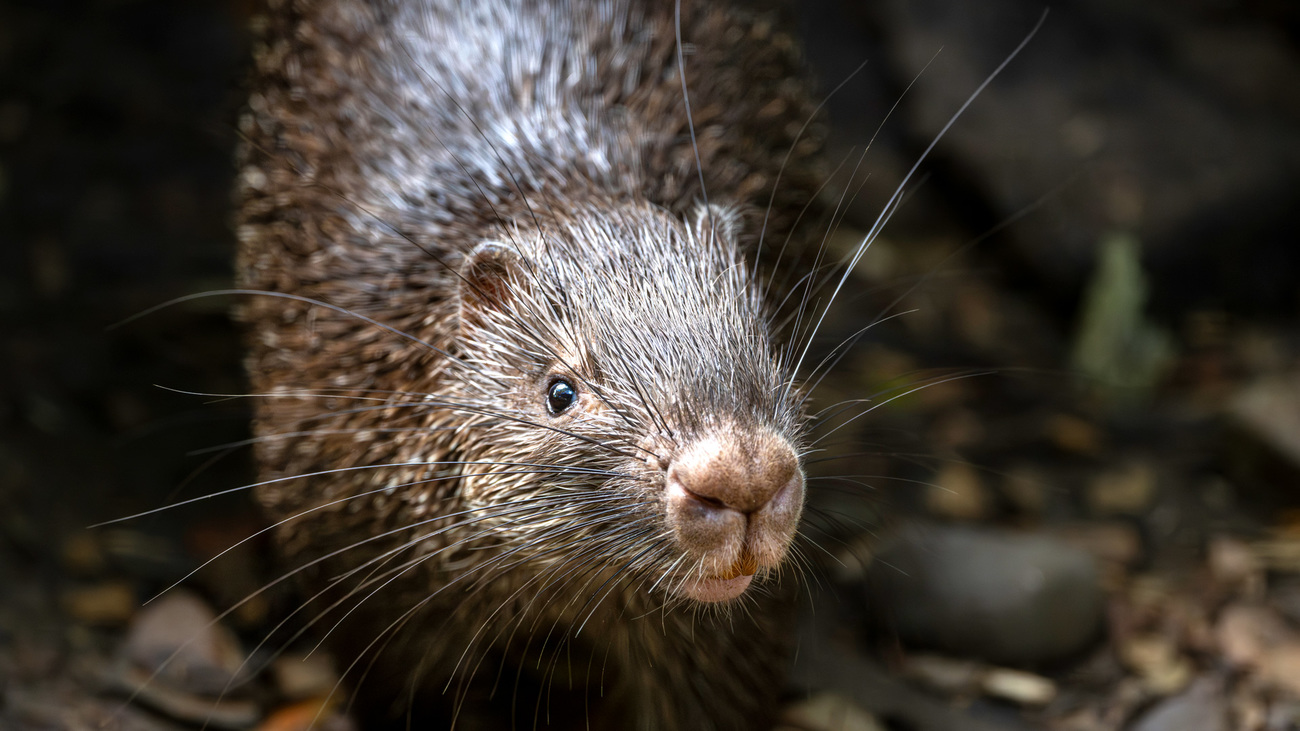What is wildlife trafficking?
What is wildlife trafficking?
One of the most pressing issues facing the natural world today is wildlife crime—illegal actions that harm wild animals and pose a threat to our planet’s precious biodiversity. Wildlife trafficking, one form of wildlife crime, is the illegal trade, smuggling, poaching, capture, or collection of legally protected animals.
🚨 Sorry to interrupt here, it's important. In January 2025, the US government abruptly paused all foreign assistance funding, putting critical conservation efforts on indefinite hold.
Can you chip in to help keep our critical work going?
We’re almost there – donate to help protect wildlife and conserve our planet. 🚨

It’s fuelled by worldwide demand for wild animals and their parts. It may surprise you to learn that wildlife trafficking is the third most prevalent form of organised crime in the world, after drugs and weapons trafficking. The amount of money, people, and resources involved in this large criminal enterprise makes it a large task to tackle. The internet has only made it easier for criminals to sell and transport wildlife and their parts across international borders.
But IFAW is committed to fighting wildlife trafficking, rescuing and protecting animals from exploitation around the globe, and keeping natural habitats safe from poachers.
What laws protect wildlife from trafficking?
Many animals are protected by local or national laws or international agreements.
Adhered to by 185 countries and regional bodies around the world, the Convention on International Trade in Endangered Species (CITES), for example, groups vulnerable wildlife species based on how much protection they need. The most endangered species are listed under Appendix I, which prohibits their international commercial trade. Tigers, Asian elephants, chimpanzees, humpback whales, sun bears, and scarlet macaws are examples of CITES Appendix I-listed species, so it’s illegal to take these animals from the wild and trade them or their parts for commercial purposes.
Individual countries and regions also have their own legal instruments for regulating wildlife trade. The UK Ivory Act, for example, makes it illegal to trade elephant ivory.
In the US, the Endangered Species Act (ESA) helps protect some of the most imperilled animals in the world from poaching and trade. To help us ensure wild animals aren’t stripped of these important legal protections, please sign our petition today.
EU Digital Services Act includes the illegal trade of animals in its definition of illegal content. This implies that very large online platforms—those with more than 45 million users in the EU—must assess the risk of selling illegal wildlife and their parts and act to prevent it.
How does IFAW fight wildlife trafficking?
The term ‘wildlife trafficking’ encompasses all aspects of the illegal trade of wild animals, so IFAW works on multiple levels to prevent trafficking and to rescue and rehabilitate animal victims of these crimes.
Before being trafficked, wild animals are poached, which means illegally hunted or taken from the wild.
Many animals are killed to traffic their body parts—for example, elephants are killed for their tusks, rhinos for their horns, and bonobos for their meat (known as bushmeat).
Animals captured alive also suffer terribly. Their parents or other members of their species are usually killed so babies can be caught. Smugglers often keep live animals in cramped, inhumane conditions that spread disease and cause injury and trauma.
To reduce demand, we educate potential buyers about the horror these animals experience. Our Not a Pet campaign, for example, shows people the hidden dangers of owning an exotic pet, discouraging them from taking part in the trade.
We also provide training, mentorship, equipment, and infrastructure to wildlife authorities and park rangers to stop poaching at its source. And we help communities see value in conserving their local wildlife, rather than exploiting it.
One place where traffickers may be stopped and animals rescued is at an international border, where law enforcement officers staff checkpoints. But without the right expertise or procedures in place, customs and other law enforcement agents don’t know how to handle these fragile, traumatised animals. That’s why our Live Animals Seized in Trade (LAST) project helps officials implement procedures and best practices to properly care for rescued animals.
Through our Academy of Rescue and Conservation, we offer innovative online courses where front-line officials learn how to safely and humanely handle live animals confiscated in illegal trade. The courses are part of our Confiscated Animals—Rescue and Enforcement (CARE) initiative.
We also developed specialised capacity building workshops called Detecting Illegal Species through Prevention Training (DISRUPT). These workshops provide local authorities with essential knowledge and expertise to stop wildlife trafficking and to implement CITES. Since 2007, we’ve trained thousands of participants in over 100 courses across 40 countries.
In many cases, wildlife trafficking involves ecommerce platforms on the internet. This is known as wildlife cybercrime. IFAW engages top online commerce companies to disrupt wildlife cybercrime. In 2018, we launched the Coalition to End Wildlife Trafficking Online with WWF, TRAFFIC, and 21 companies to remove or block millions of listings for endangered and threatened species from online platforms.
Since many ads use only images rather than text descriptions of what is being sold, we worked with Chinese technology company Baidu to develop an artificial intelligence tool to identify images of endangered wildlife products. The AI Guardian of Endangered Species has a 75% accuracy rate for recognising images of elephant ivory; tiger canine teeth, skin, and claws; and pangolin scale and claws.
We also support partners doing rigorous investigative work into online trafficking. One of our partners in Indonesia, Jakarta Animal Aid Network (JAAN), recently conducted a daring investigation into online trafficking and rescued several animals, including a baby orangutan. The orangutan is now in a rehabilitation facility in the hopes that he can one day be released back into the wild.
How wildlife trafficking harms ecosystems

Taking wild animals from their natural homes is extremely harmful to our planet’s ecosystems and contributes to far-reaching detrimental impacts on the environment. Wildlife trade is considered the second-largest threat to biodiversity after habitat loss. Biodiversity is crucial for the functioning of individual ecosystems and the planet as a whole.
When a species goes extinct, more than one species is impacted. Each species is part of a complex food chain, providing benefits to the animals and plants around them. Wildlife trafficking throws off the balance of ecosystems and creates ripple effects through food chains that put numerous species at risk of extinction.
Sturgeons are one example of an animal heavily impacted by wildlife trafficking that is threatened with extinction. They are targeted for their wild-caught caviar and meat, which is illegal. Almost two-thirds of sturgeon and paddlefish species are now critically endangered according to the IUCN. Sturgeons are considered important barometers of their ecosystem’s health, as they require clean water to survive and they can live for a long time. They provide food to other animals in their habitats, and they support ecological processes like biomass production, decomposition, and nutrient cycling.
In addition to harming the ecosystems where wildlife originates, wildlife trafficking also introduces non-native species to new places. In some cases, wildlife trafficked to a foreign country or continent can rapidly become a problem there as an invasive species.
Burmese pythons are a prime example. Native to Southeast Asia, these reptiles became a popular exotic pet in the US in the 1980s, but owners quickly realised they were too large and difficult to care for. Many released them into the Florida Everglades, where they prey on native animals, including endangered species. Because of trafficking, Burmese pythons are now threatening this fragile ecosystem. In 2012, the US banned the import of Burmese pythons.
Glass frogs are another example. Their unique appearance makes these small amphibians a prime target of the exotic pet trade, but it has endangered many glass frog species in the wild. Because they are so small and well-hidden, hunting for glass frogs creates a major disturbance in their rainforest habitats, and the taking of individuals from their wild homes weakens populations and the gene pool. Fortunately, thanks in part to IFAW’s efforts, glass frogs recently won protections at CITES, allowing for an increase in data collection on their trade, which is a critical step toward understanding the global trade networks that deplete these species.
How can you prevent wildlife trafficking?
Thanks to donors like you, IFAW can protect vulnerable animals like elephants, koalas, tigers, and more from poachers and illegal wildlife trade.

There are several ways you can help fight back against wildlife trafficking. First, it’s important to learn about local, national, and international laws that apply to your area. Understanding which species are illegal to import and export can help you be more aware and wary of products and activities around you.
Avoid financially supporting institutions that import or export trafficked wildlife. Educate your family and friends too on the dangers of owning exotic pets and how many products are made from trafficked wildlife parts.
You can also advocate for new laws that prevent the trade of vulnerable and endangered species. Consider signing one of IFAW’s petitions to protect wildlife from trade and trafficking.
In the age of the internet, a lot of wildlife trafficking occurs online. Many ecommerce sites need their users’ help to take down illegal listings of wildlife and their parts. If you’re shopping online, make sure you flag or report any suspicious listings you see to the website.
If you want to help IFAW combat the illegal wildlife trade by supporting rangers, working with ecommerce companies, and creating new protected areas for vulnerable animals to roam, learn more about how you can take action for animals.
Wildlife trafficking fast facts

Here are some surprising facts you may not know about wildlife trafficking.
- Wildlife trafficking is estimated to make up to US$20 billion per year, according to INTERPOL.
- Nearly 100 million sharks are killed every year, and almost a third of shark species are threatened or near threatened with extinction. While 46 shark and ray species are protected under CITES, sharks are targeted for their fins, because they have a high price tag and are considered a delicacy in some cultures.
- In poaching circles, one kilogram of rhino horn is viewed as more valuable than one kilogram of gold. Rhino horns are widely trafficked due to demand for their use in traditional medicine and as status symbols.
- Trade from unreported and unregulated fisheries is estimated to rake in US$4.2 billion to $9.5 billion per year.
- According to the IUCN, 958 species are at risk of extinction due to wildlife trade.
- In 1980, 1.2 million African elephants roamed the continent, but fewer than 420,000 remain today—largely due to trafficking. Elephants are targeted primarily for their ivory tusks.
- Due to trafficking of tigers and their body parts, these big cats have disappeared from 95% of their original range.
- Pangolins are considered the most heavily trafficked wild mammal. They are targeted for their leather, scales, and meat. An estimated 1 million pangolins have been poached in the last decade.
- A report by the Natural Resources Defense Council found that 90% of ivory in Los Angeles, US, was most likely obtained illegally—without most of the buyers knowing.
- IFAW’s own research into the ivory trade in Europe identified 1,330 ivory and suspected ivory items recorded for sale in a 23-day period. After the UK Ivory Act came into force in 2022, our research showed 66% fewer adverts and 33% fewer specimens offered on online marketplaces.
- In 2023, we worked with the French Office for Biodiversity to destroy 1.8 tonnes of ivory to ensure these items could never be reintroduced into the commercial circuit. These 1,800 kilos represent around 180 elephants.
- For every baby chimpanzee that becomes a victim of wildlife trafficking, it’s estimated that 10 other chimps are killed in the process.
🚨 Make a life-saving gift today! Supported by animal lovers like you for over 55 years, IFAW (International Fund for Animal Welfare) works around the globe to rescue and rehabilitate animals, end illegal wildlife trade, and conserve habitats.
If you can make even a small gift today it will go far.
Related content
every problem has a solution, every solution needs support.
The problems we face are urgent, complicated, and resistant to change. Real solutions demand creativity, hard work, and involvement from people like you.